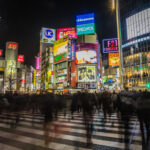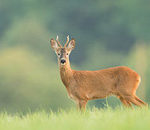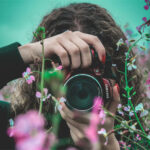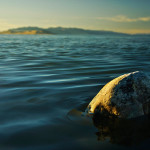Light painting is a bit of an obscure art–it involves sitting in a completely dark room, setting your camera to a long exposure, and painting light onto the image with delicate wrist strokes of an LED light. (This article gives an excellent overview.) In the video below, we’re shown an intermediate-level rule of light painting that uses something called the “inverse-square law”:
The inverse-square law dictates that “light falls off by the square of the distance.” Simply put, for light painting purposes, if you move your light twice as far from the object, you lose two stops of light. You should experiment with this at home if you’re interested: adjusting the distance between your light and the object can create some very unique visual effects.
Harold Ross, the video’s instructor, is a masterful fine art photographer: still life pears, antique piano shops, rusted oil cans all take on a new surreal look in front of his lens. In this video’s demonstration, he’s shooting a portrait of a old scale. Note how there’s no strong definition between the object and the background:

This original image lacks definition between the scale and the background.
Ross wants to fix that by placing a highlight on the upper-righthand side. Normally, he says, he would take his LED light and keep its distance from the object consistent while painting up and down the scale’s frame. That way, the photographer has more control of the light and its consistency. This would create a solid beam of light along the rim, like this:

Ross painted a highlight onto the scale’s edge for this shot, but the light is a bit too even.
However, Ross wants to try something different. Instead of moving his entire arm up and down to create a uniform light, he keeps his arm steady and oscillates his wrist up and down, like a rotating fan. This tapers the light off along the edges from its strongest point in the center, which gives the image more depth and subtlety.

Raking the light created a more aesthetically pleasing highlight.
“I think it’s more beautiful. It feels a little more round, and it also indicates the direction of light a little more clearly.” – Harold Ross
Like This Article?
Don't Miss The Next One!
Join over 100,000 photographers of all experience levels who receive our free photography tips and articles to stay current:







what light are u using? Can i gget it from amazon?